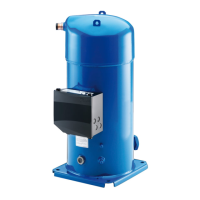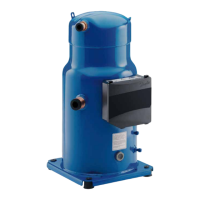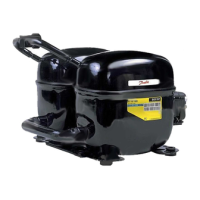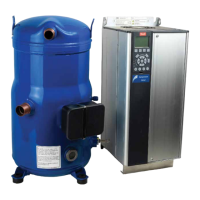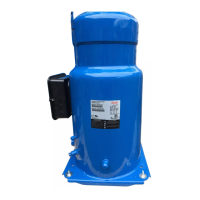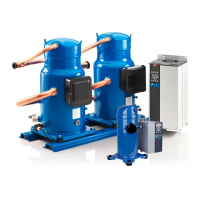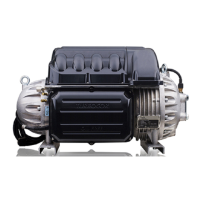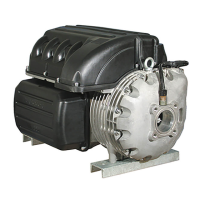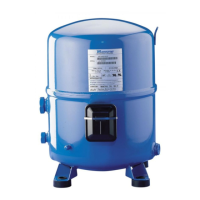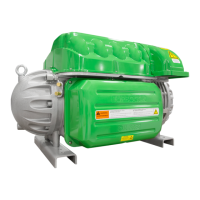31
FRCC.PC.007.B8.02
Application guidelines
System design recommendations
Liquid ood back
Suction accumulator: a suction accumulator
o ers protection against refrigerant ood back
at start-up, during operations or defrosting by
trapping the liquid refrigerant upstream from
the compressor. The suction accumulator also
protects against o -cycle migration by providing
additional internal free volume to the low side of
the system.
A suction accumulator must be carefully
dimensioned, taking into account the refrigerant
charge as well as the gas velocity in the suction
line.
The accumulator should not be sized for less than
50 % of the total system charge. Tests must be
conducted to determine the actual refrigerant
holding capacity needed for the application.
Depending on the operating conditions it may
happen that the recommended connections of
the accumulator are one size smaller than the
suction line.
During normal operation, refrigerant enters the
compressor as a superheated vapour. Liquid
ood back occurs when a part of the refrigerant
entering the compressor is still in liquid state.
Danfoss SH scroll compressors can tolerate
occasional liquid ood back. However, system
design must be such that repeated and excessive
ood back is not possible.
A continuous liquid ood back will cause oil
dilution and, in extreme situations lead to lack
of lubrication and high rate of oil leaving the
compressor.
Liquid ood back test - Repetitive liquid
ood back testing must be carried out under
expansion valve threshold operating conditions:
a high pressure ratio and minimum evaporator
load, along with the measurement of suction
superheat, oil sump temperature and discharge
gas temperature.
During operations, liquid ood back may be
detected by measuring either the oil sump
temperature or the discharge gas temperature.
If at any time during operations, the oil sump
temperature drops to within 10K or less above
the saturated suction temperature, or should
the discharge gas temperature be less than 35K
above the saturated discharge temperature, this
indicates liquid ood back.
Continuous liquid ood back can occur with
a wrong dimensioning, a wrong setting or
malfunction of the expansion device or in case of
evaporator fan failure or blocked air lters.
A suction accumulator providing additional
protection as explained hereunder can be used
to solve light continuous liquid ood back.
• While the thermostat is o , the number of
pressure switch resets should be limited to
avoid short cycling of the compressor. Use
dedicated wiring and an additional relay which
allows for one shot pump-down.
The pump-down allows to store all the refrigerant
in the high pressure side circuit. On unitary
or close-coupled systems, where the system
refrigerant charge is expected to be both correct
and de nable the entire system charge may be
stored in the condenser during pump-down if all
components have been properly sized.
Other application needs a liquid receiver to store
the refrigerant.
Receiver dimensioning requires special attention.
The receiver shall be large enough to contain
part of the system refrigerant charge but it shall
not be dimensioned too large. A large receiver
easily leads to refrigerant overcharging during
maintenance operation.
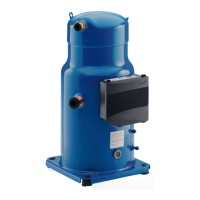
